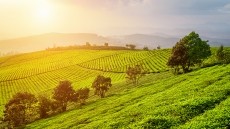US pistachios face disease
pistachios, scientists warn the relatively young industry in
California that a devasting disease could put paid to future
growth.
Rolling out more than 250 million pounds of pistachios a year onto the world market, at a value of over $235 million, California entered the world pistachio market in 1976, a market jump-started after 1979 when Iran took 63 Americans hostage. That crisis lasted 444 days and soured relations between the two nations. Iran, the world's leading producer of pistachios, had been the principal supplier for the United States. Then-President Jimmy Carter clamped a year long embargo on Iranian pistachios, when it ended, Iran began dumping below-cost pistachios on the American market.
The practice came to an abrupt halt in 1987, when California's pistachio industry succeeded in winning the imposition of prohibitive duties on Iranian pistachios. In 1987, Iranian pistachio imports to the United States totaled zero.
California pistachios entered the European market in substantial volume in 1997, when a freeze destroyed half of the Iranian crop and Iranian pistachios were banned from entering Europe because of high levels of a naturally occurring toxin in the nuts. Exports now account for about 30 per cent of California's pistachio sales, with Italy, Germany, Canada, France, Japan and Hong Kong as major customers.
But this week plant pathologists at the American Phytopathological Society ( APS) say a serious and devastating disease could put a definite halt to this relatively young industry.
According to Themis Michailides, plant pathologist at the university of California, Davis, this disease, panicle and shoot blight of pistachio, was first discovered in 1984 in a commercial orchard in the northern Sacramento Valley and has since become a disease of major importance for pistachios grown in California.
"Yield losses from 40 to 100 per cent were not uncommon in the orchards where the disease was discovered," said Michailides. "The destruction caused by this disease makes panicle and shoot blight the most serious threat to pistachio trees grown in California," he added.
Panicle and shoot blight is caused by the fungus Botryosphaeria dothidea, aggressive and difficult to control.
According to Michailides, the pistachio industry in California is based on a cultivar that is very susceptible to this particular fungus. "Because of the California pistachio's susceptibility to this fungus, panicle and shoot blight has the potential to reach epidemic levels in pistachio orchards in only a few years," he warned.
To prevent such epidemics from occurring, and since some resistance to the disease exists in the present Pistacia germplasm, breeders need to work closely with plant pathologists to develop disease resistant varieties of the pistachio tree, the plant pathologist said.
In addition, Michailides also recommends growers remain proactive in their efforts to keep their orchards free from infection of the pathogen by conducting regular surveys, sanitation by pruning of possible infections, controlling insects, and following fungicide programs that were shown to control panicle and shoot blight.
Today there are about 550 pistachio growers in the US, the majority concentrated in California. Producting over 400 million pounds of pistachios a year, Iran is the number one producer in the world. Followed by the USA, Turkey, Syria, Greece and Italy.




























